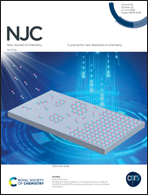Passion fruit-like microspheres of FeS2 wrapped with carbon as an excellent fast charging material for supercapacitors†
Abstract
Pyrite (FeS2) has attracted growing attention as a pseudocapacitance electrode material for supercapacitors. However, the fast capacity fading and the poor cycling performance greatly hinder its practical application. Herein, a facile hydrothermal method coupled with an etching method has been used to synthesize passion fruit-like FeS2@Carbon microspheres. The as-prepared materials exhibit excellent electrochemical performance with a high specific capacity of 278.4 F g−1 at 1 A g−1 and satisfactory cycling stability with 88.5% capacity retention at 8 A g−1 after 10 000 cycles. The reason is that carbon as a shell and matrix can effectively prevent the volume changes of FeS2 during the charge and discharge processes. Furthermore, we have investigated the cycling stabilities of the electrode materials at different current densities. The capacity retention is 44.7% at 3 A g−1 after 4000 cycles and 57.7% at 5 A g−1 after 10 000 cycles. The proposed strategy provides an effective method to relieve the capacity fading problem of FeS2 electrode materials. More excitingly, increasing the current density can raise the cycling stability of the electrode materials during the charge–discharge process. Therefore, the as-prepared materials possess potential applications in the fast-charging field of supercapacitors.



 Please wait while we load your content...
Please wait while we load your content...